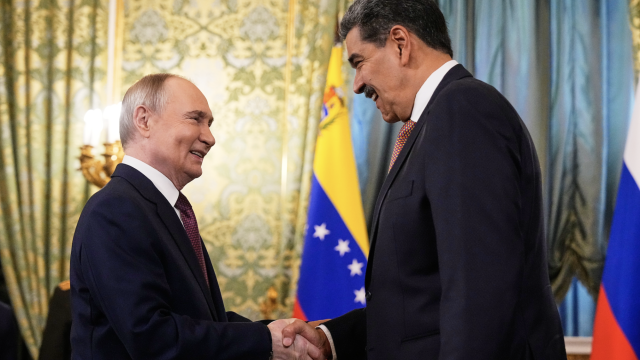Russian financial conditions and monetary policy are neutral and inflation could fall within the Central Bank's target range of 5 to 6 percent in the second quarter this year, a senior central banker said Wednesday.
First deputy chairman Alexei Ulyukayev made the comments at a presentation of the Central Bank's first quarterly monetary policy report, whose publication coincided with a spike in annual inflation in January to 7.1 percent.
"We consider the monetary gap — it is neutral," Ulyukayev told reporters. "We don't see a significant gap between potential growth and actual growth. In this sense we consider monetary policy as neutral considering the risks."
The Central Bank is stepping up its communication of the rationale for keeping key interest rates on hold since last September, despite calls from government leaders for monetary easing to revive flagging growth.
Hinting at a possible compromise, Ulyukayev said the Central Bank would discuss bringing its 8.25 percent refinancing rate, which is largely symbolic, closer into line with its main policy rates.
The Central Bank, which next reviews policy Feb. 12, is expected by economists to keep its main lending rate — its 5.5 percent minimum one-day repo rate — on hold.
The Central Bank has continued to sound hawkish on inflation, but the growth versus inflation dilemma could become less pressing, Ulyukayev suggested. He said that inflation was close to its peak and would enter a downtrend in March.
Annual price growth could fall within the Central Bank's 5 to 6 percent target range in the second quarter, he said — diverging from a forecast in the Central Bank's report that inflation would be on target in the second half of the year.
Ulyukayev, a leading contender to replace outgoing chairman Sergei Ignatyev in June, also said policy makers would propose widening their inflation target to 2 percentage points from the one-point range it currently uses.
The Central Bank is seeking to complete a shift towards western-style inflation targeting, away from a focus on the exchange rate, a policy approach that puts a premium on steering inflation expectations and fine-tuning interest rates.
Related articles:
A Message from The Moscow Times:
Dear readers,
We are facing unprecedented challenges. Russia's Prosecutor General's Office has designated The Moscow Times as an "undesirable" organization, criminalizing our work and putting our staff at risk of prosecution. This follows our earlier unjust labeling as a "foreign agent."
These actions are direct attempts to silence independent journalism in Russia. The authorities claim our work "discredits the decisions of the Russian leadership." We see things differently: we strive to provide accurate, unbiased reporting on Russia.
We, the journalists of The Moscow Times, refuse to be silenced. But to continue our work, we need your help.
Your support, no matter how small, makes a world of difference. If you can, please support us monthly starting from just $2. It's quick to set up, and every contribution makes a significant impact.
By supporting The Moscow Times, you're defending open, independent journalism in the face of repression. Thank you for standing with us.
Remind me later.





